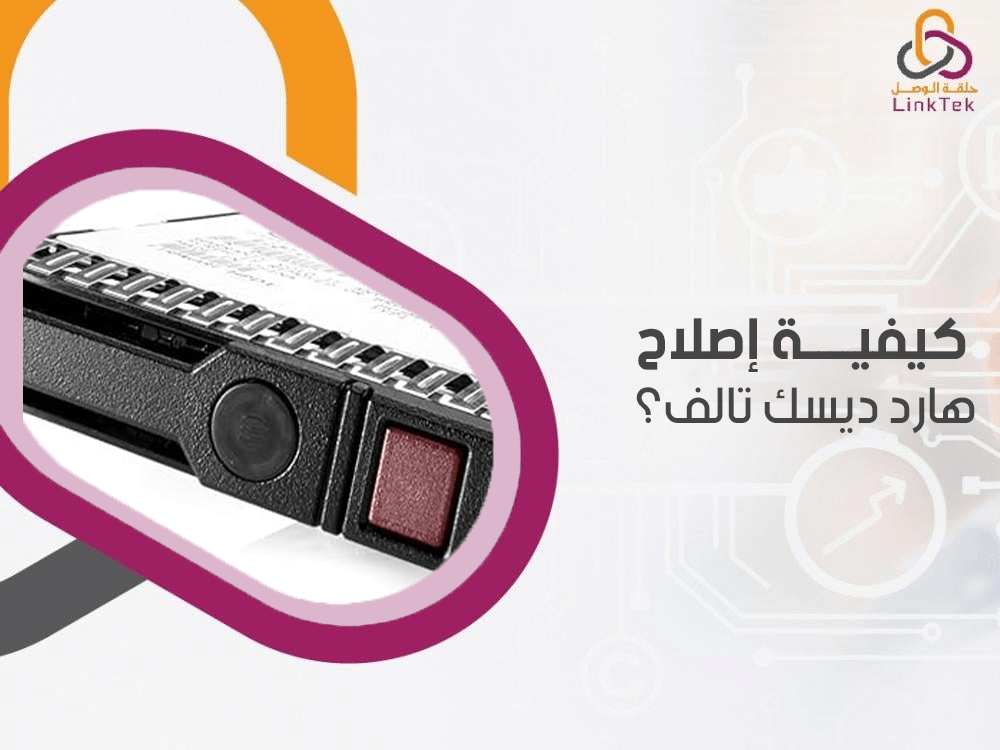
In many instances, we encounter hard drive failures, whether it's an external hard drive connected to the computer externally or an internal hard drive located inside the computer. Naturally, you may want to recover the data stored on the damaged hard drive. This article provides a comprehensive guide on how to repair a damaged hard drive and recover the data stored on it. Additionally, we will discuss the main causes of hard drive failure and how to fix a damaged hard drive.
How to Repair a Damaged Hard Drive and Recover Data
As previously mentioned, there are times when you need to know how to repair a damaged hard drive to retrieve essential data. Here are some methods to repair a damaged hard drive and recover the data:
Immediate Actions After Hard Drive Failure
First, stop using the hard drive immediately to prevent further data loss. If it's an internal hard drive, shut down the computer. If it's an external hard drive, disconnect it. Allow the hard drive some time before trying to use it again. Sometimes, cooling the hard drive can help, especially in cases of overheating.
Verify the Issue with Another Computer
Connect the external hard drive to another computer to ensure the problem lies within the hard drive and not the computer.
Use Diagnostic Software
Employ hard drive diagnostic software to assess its condition and identify the damage extent. Install or purchase one of these applications as a precautionary measure for future use. This software can assist in diagnosing and potentially resolving issues.
Check and Replace Connection Cables
Replace the connection cable or SATA interface, as a broken cable or faulty SATA interface might be the cause of the malfunction. Replacing these components could solve the issue.
Replace the PCB Board
In some cases, the problem may lie with the PCB (printed circuit board) of the hard drive. Replacing the PCB board can sometimes restore functionality.
Data Recovery Software
Utilize data recovery software like Remo Recover, Disk Drill, TestDisk, or Recuva. These programs, some free and others paid, can help recover data from a damaged hard drive.
Run Antivirus Software
Conduct a virus scan using antivirus software for both internal and external hard drives. This step helps protect the hard drive from viruses and can aid in recovering its functionality if a virus caused the issue.
Handle the Hard Drive with Care
Use the hard drive cautiously if you identify any issues to avoid further data loss.
Seek Professional Help
If all attempts fail, contact professional technicians to avoid additional data loss. Specialists can provide advanced solutions and mitigate further damage.
Contact the Manufacturer
Reach out to the hard drive's manufacturer to inquire about solutions for various hard drive problems. Sometimes, manufacturing defects cause issues, and the manufacturer can offer guidance or replacements.
Common Causes of Hard Drive Failure
Understanding the causes of hard drive failure can help you prevent it. Here are some reasons for hard drive malfunctions and tips to avoid them:
Improper Handling
Improper handling, such as incorrect insertion or removal, can damage both external and internal hard drives. Ensure correct connection and proper formatting to avoid damage.
Virus Infections
Virus infections can affect both internal and external hard drives. Always use reliable antivirus software and perform regular scans to protect your hard drives from viruses.
Wear and Tear
Over time, wear and tear can affect internal and external hard drives due to heavy usage or the natural end of their lifespan. Regular maintenance and mindful usage can prolong their life.
Manufacturing Defects
Some hard drives might fail due to manufacturing defects. If you encounter an issue, contact the manufacturer to check for potential recalls or solutions.
Corrupt Files
Corrupt files within the hard drive can cause damage. Regularly check and remove such files to maintain hard drive health.
Repairing a damaged hard drive and recovering data is crucial for anyone dealing with data storage issues. By following the methods outlined above, you can attempt to restore your hard drive and recover your important data. Always have data recovery and antivirus software installed and perform regular virus scans. If your efforts fail, seek professional help to avoid further data loss.

